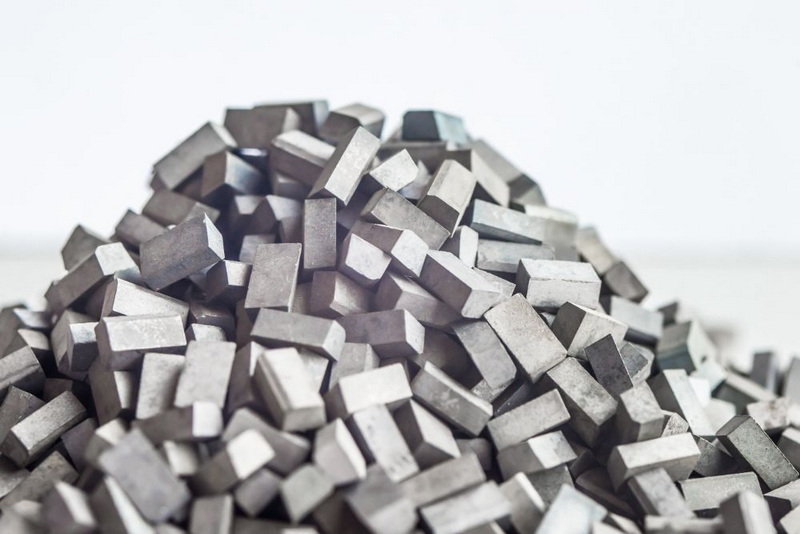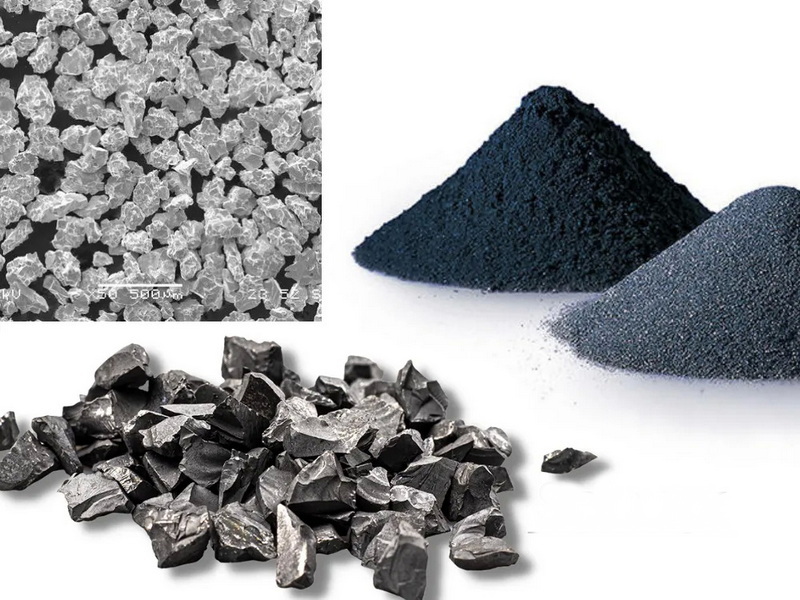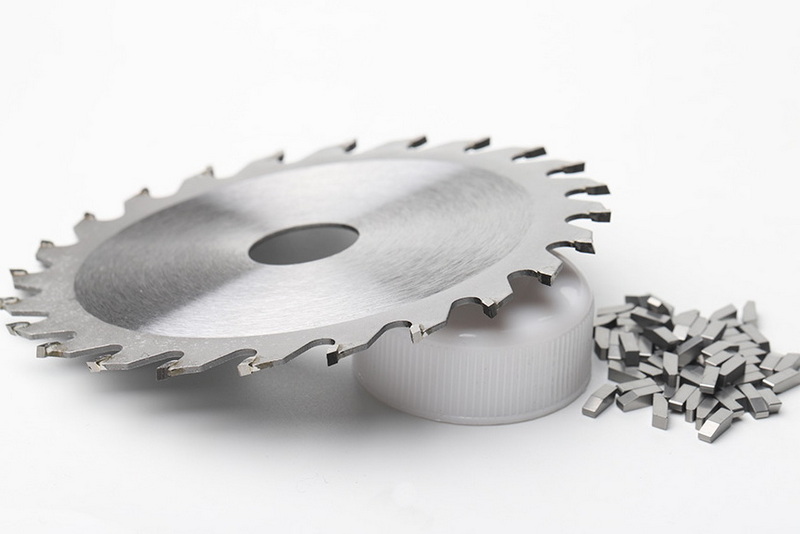Content Menu
● Introduction to Tungsten Carbide
>> Properties of Tungsten Carbide
● Applications of Tungsten Carbide
● Identifying Genuine Tungsten Carbide
● Challenges with Counterfeit Products
● Environmental Impact and Recycling
● Future Developments
● Economic Impact
● Consumer Awareness
● Conclusion
● FAQs
>> 1. What is Tungsten Carbide?
>> 2. How is Tungsten Carbide Used?
>> 3. How to Identify Genuine Tungsten Carbide?
>> 4. Is Tungsten Carbide Hypoallergenic?
>> 5. Can Tungsten Carbide be Recycled?
● Citations:
Tungsten carbide, a compound made from equal parts tungsten and carbon, is renowned for its exceptional hardness, wear resistance, and durability. It is widely used in industrial applications, cutting tools, and even jewelry due to its unique properties. However, with the rise of counterfeit products, it's essential to understand how to identify genuine tungsten carbide and its applications.

Introduction to Tungsten Carbide
Tungsten carbide (WC) is a chemical compound that combines tungsten and carbon atoms in a 1:1 ratio. It is known for its high melting point, thermal conductivity, and extreme hardness, which makes it comparable to diamonds in terms of scratch resistance. Tungsten carbide is often mixed with a metallic binder like cobalt to enhance its toughness and durability, creating a cermet (ceramic-metallic composite).
Properties of Tungsten Carbide
- Hardness: Tungsten carbide ranks about 9.0–9.5 on the Mohs scale, making it highly resistant to scratches and wear.
- Density: It is twice as dense as steel, contributing to its stability and durability in high-impact environments.
- Thermal Properties: It has a high melting point of approximately 2,870°C and excellent thermal conductivity, ensuring efficient heat dissipation in high-temperature operations.
Applications of Tungsten Carbide
Tungsten carbide is used in various industries due to its superior properties:
1. Industrial Tools: It is used in cutting tools, drill bits, and abrasives due to its ability to maintain sharpness under high-stress conditions. Tungsten carbide tools are particularly effective in machining hard materials like steel and titanium.
2. Jewelry: Tungsten carbide rings are popular for their durability and scratch resistance, making them ideal for everyday wear. These rings are often preferred by individuals who work with their hands or engage in activities that could damage other types of jewelry.
3. Coatings: Tungsten carbide coatings are applied to industrial rollers and machinery parts to enhance wear resistance and durability. This extends the lifespan of equipment and reduces maintenance costs.
4. Aerospace and Defense: In these sectors, tungsten carbide is used in rocket nozzles and other components that require high thermal resistance and durability.
5. Medical Equipment: It is used in surgical instruments and implants due to its biocompatibility and resistance to corrosion.
Identifying Genuine Tungsten Carbide
To ensure that a product is made from real tungsten carbide, several methods can be employed:
1. Appearance and Touch: Genuine tungsten carbide coatings have a smooth, uniform surface with a metallic luster. They feel solid and smooth to the touch.
2. Hardness Test: Conducting a Rockwell hardness test can confirm if the material meets the hardness standards of tungsten carbide, typically above 70HRC.
3. Microstructure Analysis: Using electron microscopy to analyze the morphology and distribution of coating particles can help verify the authenticity of the tungsten carbide coating.
4. Wear Resistance Test: Applying friction to the surface and observing the wear can determine if the coating maintains the wear resistance expected of genuine tungsten carbide.
5. Corrosion Resistance Test: Exposing the coating to corrosive environments and observing its condition can also verify its authenticity.

Challenges with Counterfeit Products
Counterfeit tungsten carbide products often have inferior properties, such as lower hardness and wear resistance. These products may appear rough, uneven, or powdery and can easily wear off or corrode under stress. The use of counterfeit materials can lead to equipment failure, increased maintenance costs, and safety risks.
Environmental Impact and Recycling
Tungsten carbide is generally considered environmentally friendly due to its recyclability. Recycling tungsten carbide from worn-out tools and scrap material reduces waste and conserves resources. This process involves collecting and processing the material to extract tungsten, which can then be reused in the production of new tungsten carbide products. The recycling process also helps reduce the demand for primary tungsten, which can have environmental impacts associated with mining.
Future Developments
Research is ongoing to improve the properties of tungsten carbide by enhancing its toughness and reducing the use of cobalt, which can be toxic in large quantities. New manufacturing techniques, such as 3D printing, are also being explored to create complex shapes and structures that were previously impossible to produce. These advancements could lead to more efficient and durable products across various industries.
Economic Impact
The use of genuine tungsten carbide has a significant economic impact, particularly in industries where equipment longevity and performance are critical. By extending the lifespan of machinery and tools, businesses can reduce maintenance costs and increase productivity. Additionally, the recycling of tungsten carbide contributes to a more sustainable economy by conserving resources and reducing waste.
Consumer Awareness
For consumers, especially those purchasing jewelry or tools, it's crucial to be aware of the authenticity of tungsten carbide products. Understanding the characteristics and benefits of genuine tungsten carbide can help consumers make informed purchasing decisions and avoid counterfeit products that may not meet their expectations.
Conclusion
Tungsten carbide is a highly valued material due to its exceptional hardness and durability. However, not all products labeled as tungsten carbide are genuine. Understanding how to identify real tungsten carbide through appearance, hardness tests, and other methods is crucial for ensuring quality and performance in industrial and consumer applications. As technology advances, the applications of tungsten carbide are expected to expand further, contributing to more efficient and durable products across various industries.

FAQs
1. What is Tungsten Carbide?
Tungsten carbide is a chemical compound made from equal parts tungsten and carbon, known for its hardness and wear resistance.
2. How is Tungsten Carbide Used?
It is used in cutting tools, jewelry, coatings for industrial machinery, aerospace components, and medical equipment due to its durability and hardness.
3. How to Identify Genuine Tungsten Carbide?
Genuine tungsten carbide can be identified through hardness tests, microstructure analysis, wear resistance tests, and corrosion resistance tests.
4. Is Tungsten Carbide Hypoallergenic?
Tungsten carbide itself is hypoallergenic, but some alloys may contain nickel, which can cause allergic reactions in sensitive individuals.
5. Can Tungsten Carbide be Recycled?
Yes, tungsten carbide can be recycled from worn-out tools and scrap material, reducing waste and conserving resources.
Citations:
[1] https://en.wikipedia.org/wiki/Tungsten_carbide
[2] https://www.jinhangmachinery.com/news/how-to-tell-if-the-tungsten-carbide-coating-of-industrial-rollers-is-real
[3] https://www.linde-amt.com/resource-library/articles/tungsten-carbide
[4] https://www.istockphoto.com/photos/tungsten-carbide-drill-bits
[5] https://www.jewelryinnovations.com/product-category/mens-rings/rugged-tungsten-bands/
[6] https://www.tungstenringsco.com/faq
[7] https://www.thermalspray.com/questions-tungsten-carbide/
[8] https://www.larsonjewelers.com/pages/the-pros-cons-of-tungsten-carbide-rings
[9] https://www.thermalspray.com/how-to-distinguish-real-tungsten-carbide-from-fakes/
[10] https://www.tungstenrepublic.com/Tungsten-Carbide-Rings-FAQ.html
[11] https://www.silverworks.com/blogs/news/facts-and-myths-about-tungsten-rings
[12] https://www.retopz.com/57-frequently-asked-questions-faqs-about-tungsten-carbide/
[13] https://www.larsonjewelers.com/pages/tungsten-rings-pros-cons-facts-myths
[14] https://tuncomfg.com/about/faq/
[15] https://www.findurings.com/blogs/blog/genuine-or-fake-tungsten-rings-how-can-you-make-a-correct-choice
[16] https://www.durit.com/technology/carbide
[17] https://www.reddit.com/r/wedding/comments/559eft/when_looking_for_tungstencarbide_wedding_bands/
[18] https://www.takealot.com/tungsten-carbide-ring-authenticity/PLID91666921
[19] https://www.imetra.com/tungsten-carbide-material-properties/
[20] https://www.stevengdesigns.com/blogs/news/the-difference-between-tungsten-and-tungsten-carbide
[21] https://www.titanjewellery.co.uk/Mens/Tungsten-Rings.html
[22] https://www.freepik.com/free-photos-vectors/tungsten-carbide
[23] https://www.happylaulea.com/collections/tungsten-carbide
[24] https://www.tungco.com/insights/blog/frequently-asked-questions-used-tungsten-carbide-inserts/
[25] https://consolidatedresources.com/blog/10-facts-about-tungsten-carbide/
[26] https://www.hit-tw.com/newsdetails.aspx?nid=298
[27] https://www.bruker.com/en/products-and-solutions/elemental-analyzers/eds-wds-ebsd-SEM-Micro-XRF/quantax-eds-for-sem/ticn-hard-coatings-for-tungsten-carbide-cutting-tools.html
[28] https://www.istockphoto.com/photos/tungsten-carbide
[29] https://www.industrialplating.com/materials/tungsten-carbide-coatings
[30] https://tiara.com.sg/collections/all-tungsten
[31] https://periodictable.com/Elements/074/pictures.html
[32] https://www.nbcbearings.com/tungsten-carbide-carbon-coating-in-ldb/
















